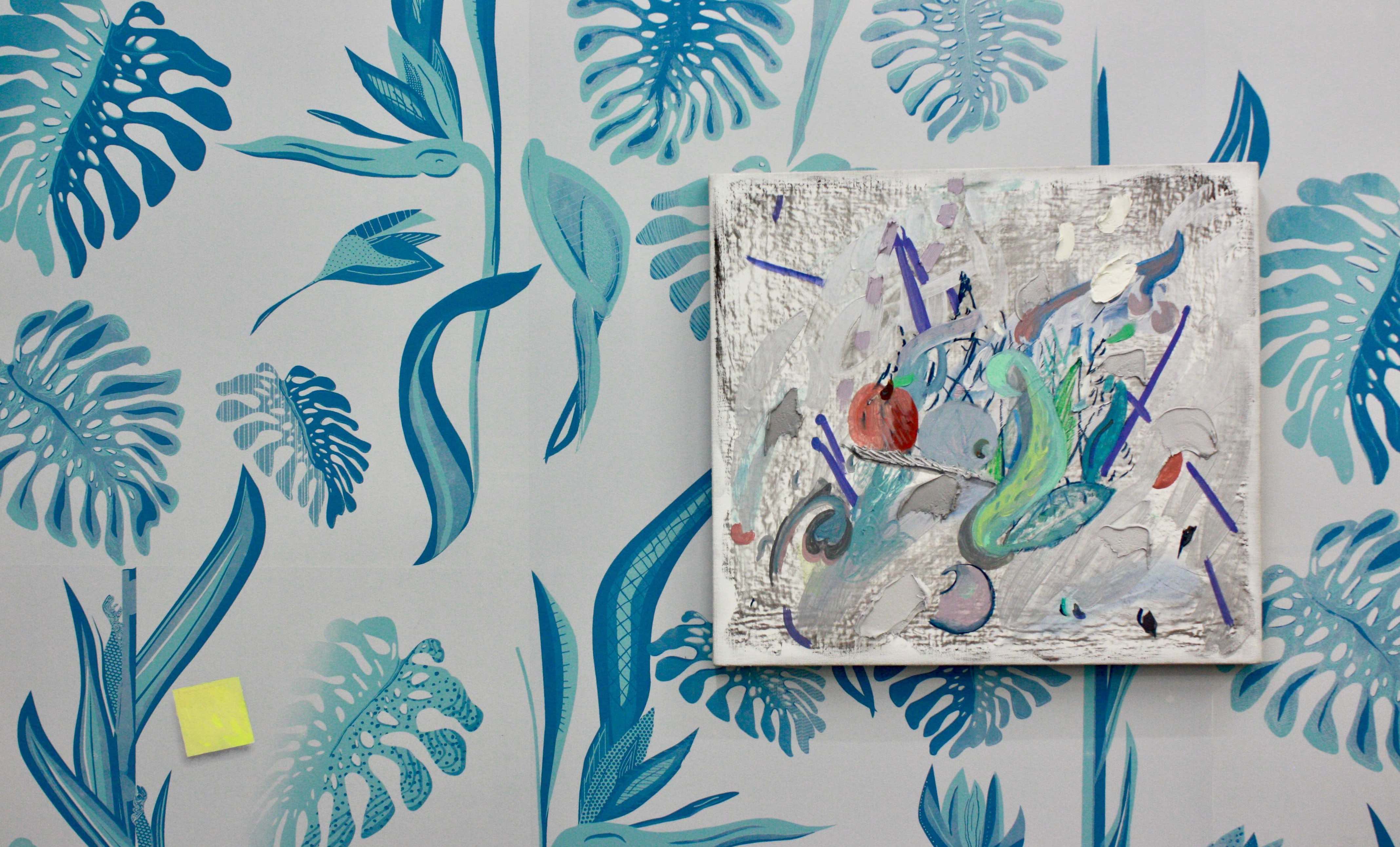
Essay
Grid Brains and the Coefficients of Painting: On the Work of Laura Owens
by Christian Camacho
At House of Gaga
Reading time
6 min
So I wanted to make an exhibition AND make the painting.
— Laura Owens
I was amazed that people had to think about things to do, I said, “What would you end up doing if you don’t think about it,” and I said well maybe painting pictures of fruit in bowls or flowers or anything and I said well nothing wrong with that, that’s actually a pretty good idea!
— John Baldessari
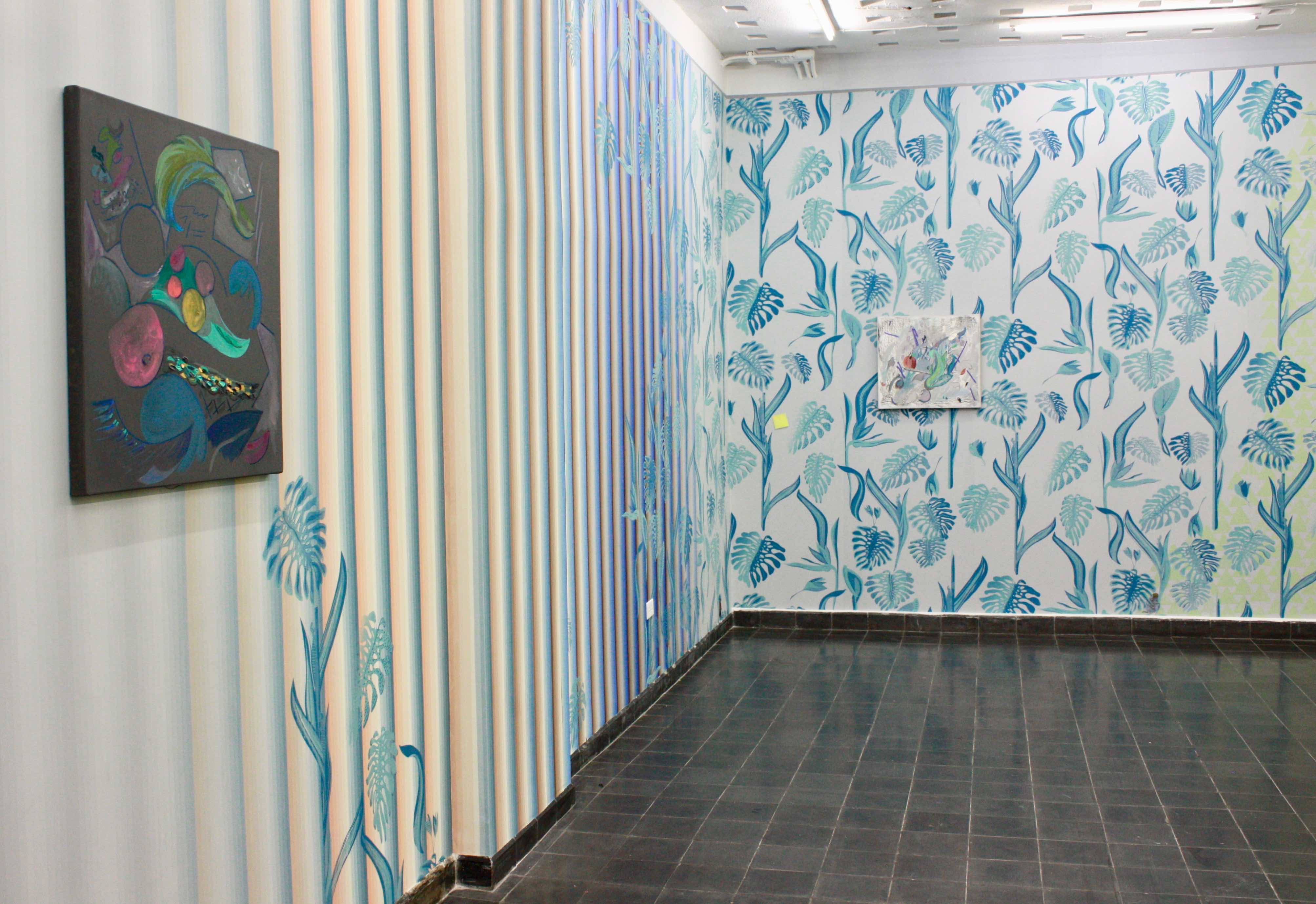
One of the things that Laura Owens’s work does is postpone, sometimes indefinitely, its appearances and, with them, our ideas about its operations.
Although we might think we know, we are usually completely oblivious as to what we are looking at until it’s too late, until we are already immersed in a type of world, created by a type of mind whose instructions, hidden in its most discrete parts, transform us, as we navigate them, into kinds of curiosity puppets (and not that this is exactly pleasant). Still, a cold satisfaction will be felt as we detect the elements of these completely deliberate activities.
Indeed, a number of transactions are in place: we exchange a direct, heated encounter with the work for the cooler unfolding of a fertile system, in which the encryption and discovery of an extremely serious repertoire of painting decisions can thrive. Immediately thereafter, we witness the sacrifice of the whole edifice of these decisions in favor of their life as future possibilities, announcing one of the great promises that Owens’s work can offer: that the painting before us let us know not only what painting does, but also what it can become. There is a lot at stake in each wager that Owens makes, and which will always be a plentiful source for the renewal of our energy.
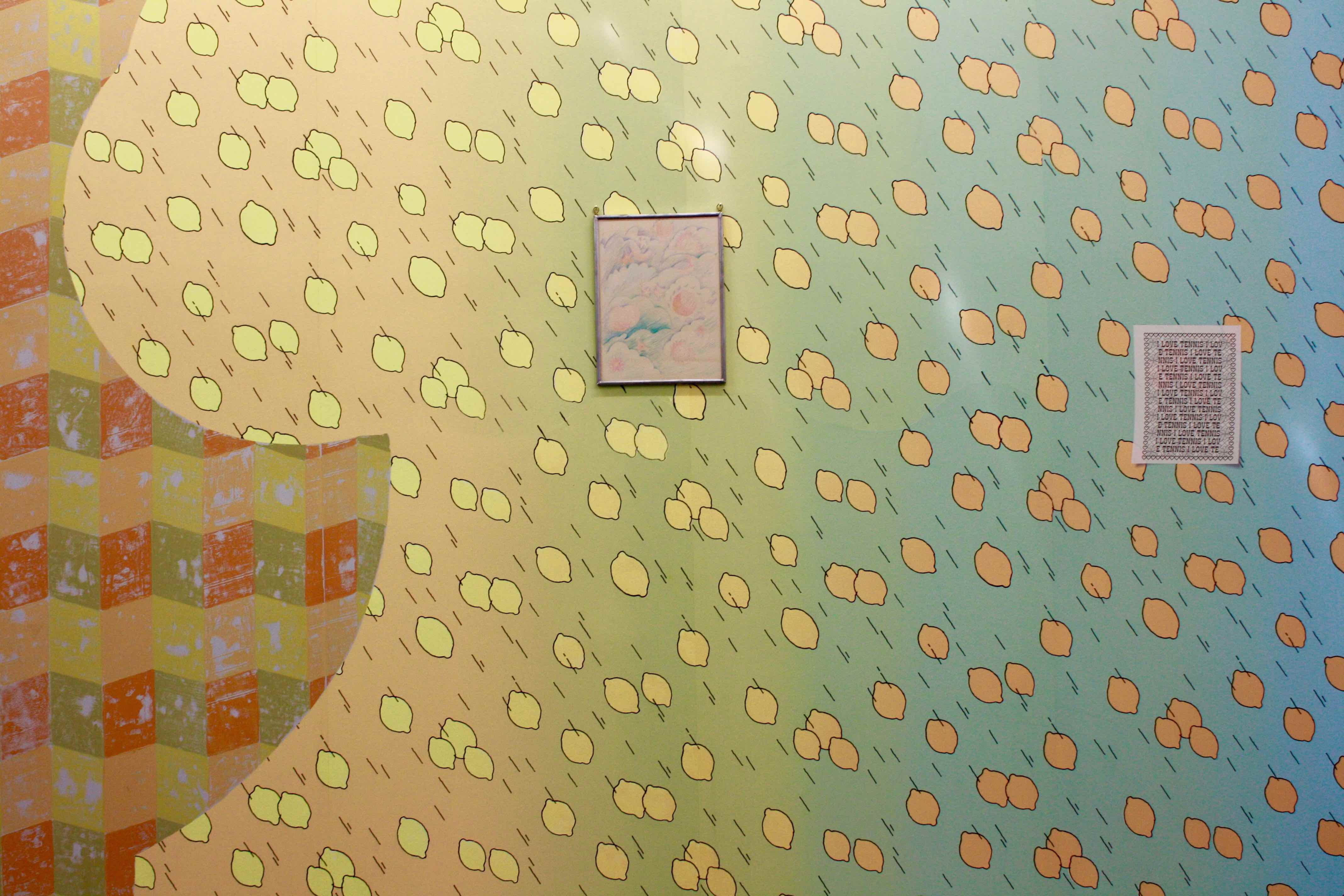
One can easily enter House of Gaga and quietly look for paintings and drawings on the walls, but nothing would be a greater distraction than that. Things will already have begun through a whole life of fragments in flux. The information on the walls, given via a complex work of wallpaper-making, immediately magnetizes our attention and demands that we transform all our distances in order to inspect it. As we slowly fall down the stairs, a world of patterns, elements, tones, and textures develops through our passage from the A to the Z of the exhibition. It is important to look closely and to observe that every feature of this wallpaper has been specifically imagined for this space. Each pipe, interruption, height, and crookedness of House of Gaga has been taken into consideration. This deployment is somehow soundly seated on the logic of the interior, a feature that will prove to be compatible with the whole of the wallpaper and its alliance with the constant mutation of the ornamental.
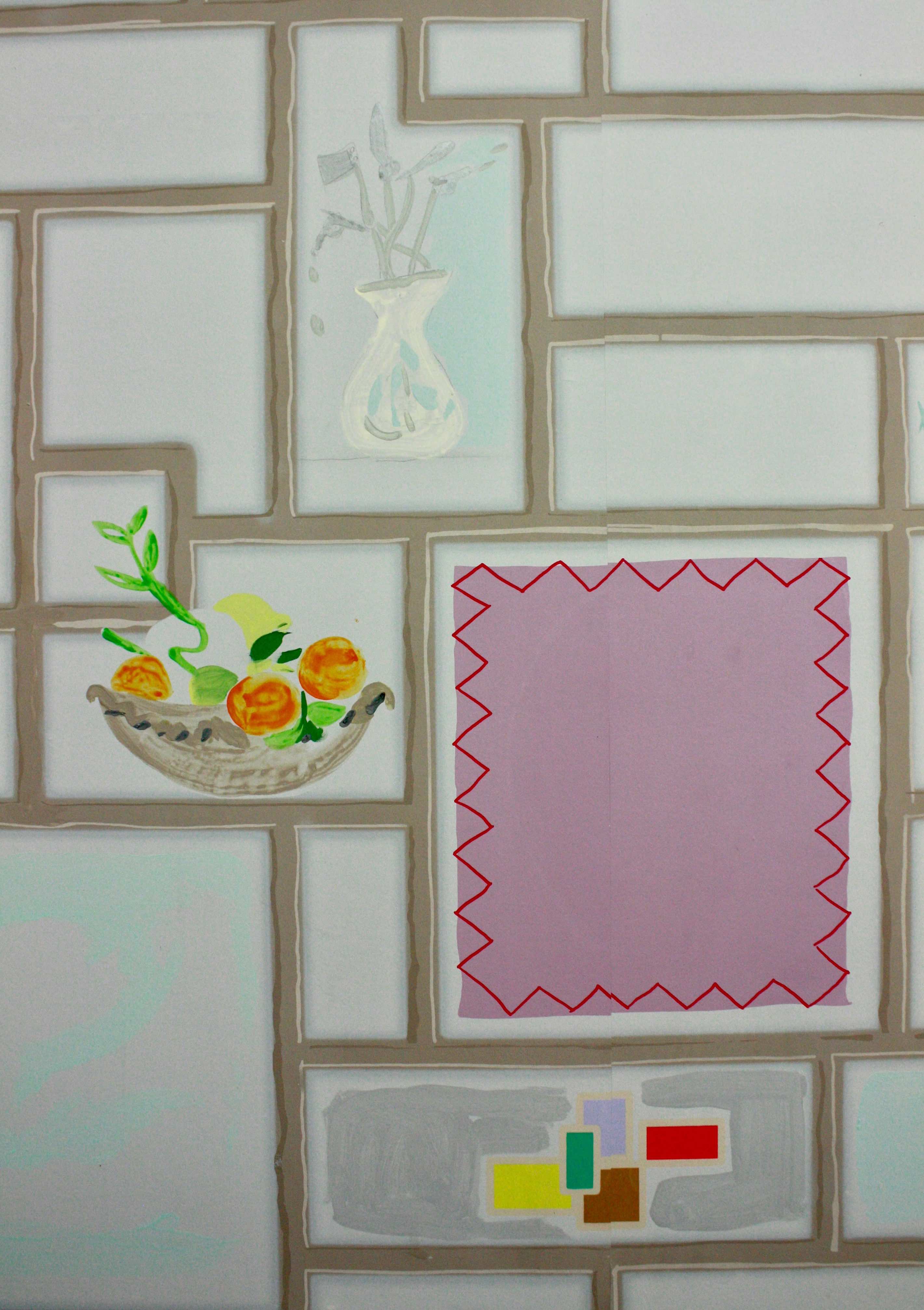
The presence of painted images and pictures, something common in Owens’s work, delivers on this occasion several hidden mice at different heights, as well as fruits, leaves, local plants, fruit bowls, branches, newspaper clips, post-it notes, cartoons, and floral elements materialized at different levels: on walls, on canvases, or as works on paper mounted within glass.
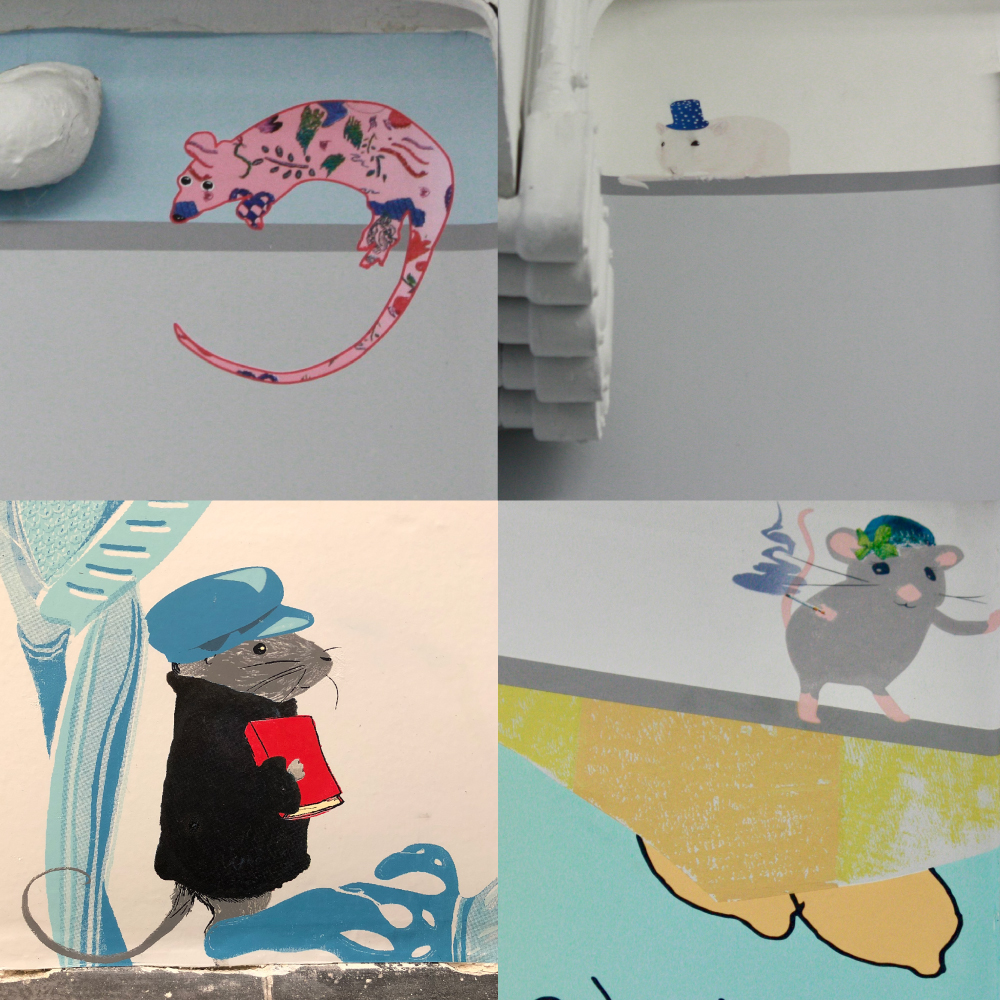
But let’s go back to the wallpaper. There is nothing economical about its considerations, as it seems fully dedicated to its own existence. Its craft-like signs are dosed through a cold and cunning design, which encompasses multiple reconciliations between screen-printing, painting, and woodblock printing. These calculations interest me as I suspect they announce a particularly relevant circumstance, a sort of microforce inherent in the invisible trace of a framework that compels the world to “snap to grid” at the smallest sign of ambiguity. This phenomenon has always appeared to me as a kind of microconvulsion in Owens’s work. Frequently, her work challenges us to reflect on the painter’s relationship with the painting’s physical borders (on x, y & z): as if what we are looking at might continue beyond the visible limits cropped by its planes.
Apart from thus observing the axis, Owens also employs a number of discrete forces to incite not only a magnetism between the whole and the grid of the whole, but also a uniformity so synthetic that it resonates as a sort of capriccio whose limits are not those of the representation of the built environment, but affirmation in the consistency of form: the forms of formation and the forms of information. The total concatenation of these circuits of stimuli gives us, instead, a feeling of belonging to a reality in constant production: the idea that in this great transition, the labyrinth of a mind poured unto painting unceasingly ascends. This might or might not be an illusion, but all the time in the world will not give us the slightest feeling of having exhausted Laura Owens’s vast bank of painting decisions.

It is under this light that the work and its relations make me think of coefficients: omnipresent, mysterious figures that join our gaze to transform, with deliberate economy, the position of our imagination in relation to this dense grid of cohesive forces. In this world of coefficients, the totality of elements is irrelevant; anything can be calculated using anything else: hybridized murals, wallpapers, paintings, and installations…terms will be of little use in our pursuit of their parts. We have, however, our strange quantifications, this molecule that—in its lack or in its excess—propels us through the domestic labyrinth in which painting comes and goes through walls, rooms, and furniture: if one so desires, one can even go beyond the exhibition space, into the house that harbors the gallery, to look at a number of small pillows embroidered by Owens herself.
.jpg?alt=media&token=60758c15-e4ae-4d16-b1d9-da090a7a2625)
Clearly there is humor in the intelligence of these devices, but also cold and deliberate delivery. Also, to a greater or lesser degree, we will find an irony whose mode is defined by the presence and orientation of the use of the image: a kind of borrowed image that surrenders its anonymity in the presence of materials unexpectedly tamed by painting. I have never considered irony to be the kind of thing that invites me to talk about painting, and I find it evident that Owens work is much more than that. Nonetheless, I wish to use this term in order to avoid underestimating the coexistence of disparate forms and in order to highlight the value of the perceived or real contradictions present in this unique work’s expectations. It pleases me to reflect on the problem posed by the trust placed in specific anomalies of the image by painting that aims to offer fugues to its own taboos, traditions, and triumphs. I consider it possible to learn and to apprehend these possibilities through Laura Owens’s work, to see a new and intriguing brilliance in irony: one whose credibility and transparency is not constituted via its most witty affirmations, but rather through its most lucid and shared acts. In a way, an irony for the wisdom of painting.
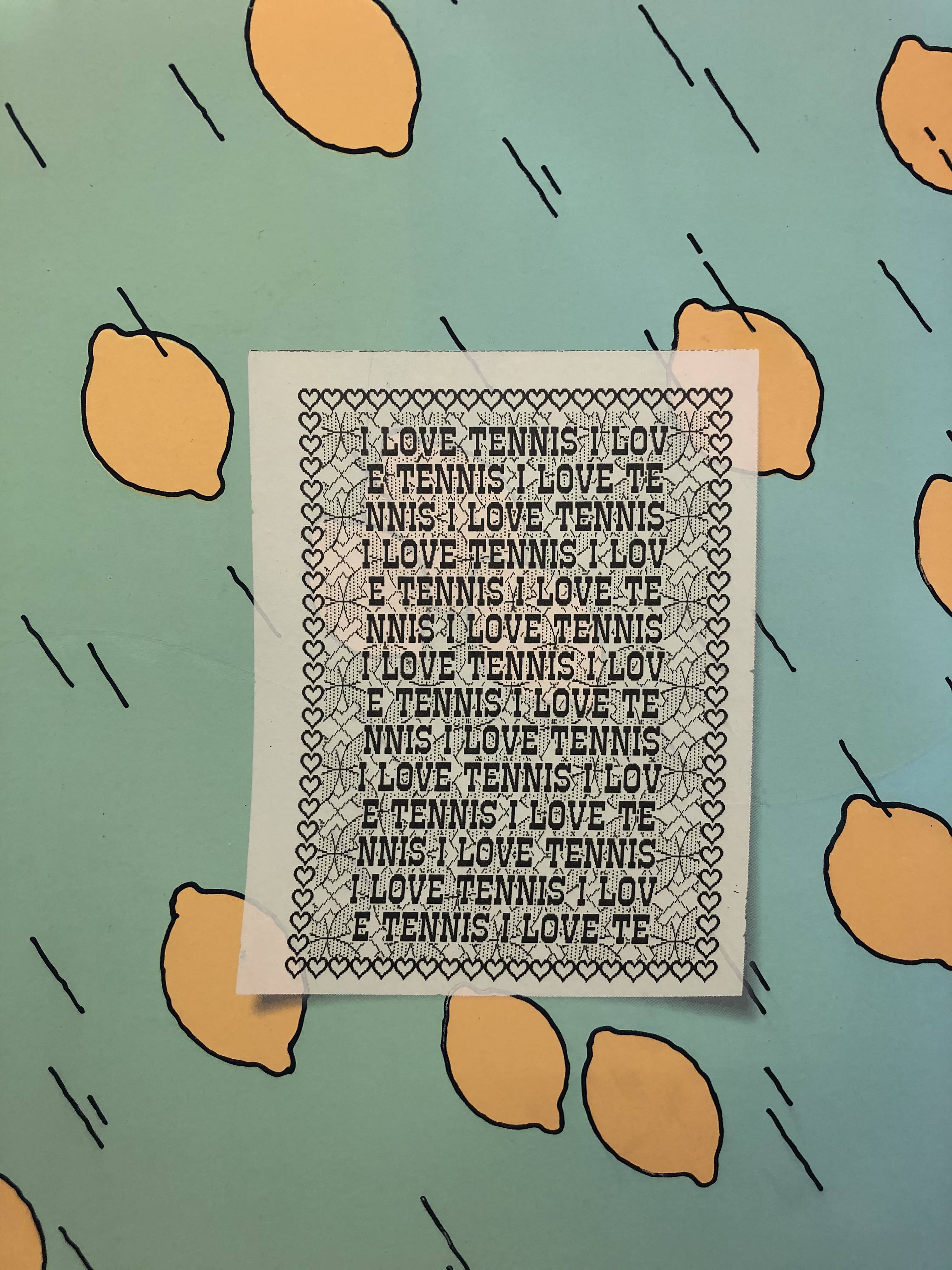
Published on March 5 2020